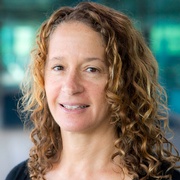STEM Education + Health Education = Creative Solutions
By Jill Denner, PhD | October 20, 2020
Senior Research Scientist II, ETR
I am often asked how my work in STEM education fits at an organization that focuses on health education and health equity. This blog post is my attempt to answer that question.
I believe that it is at the intersection of STEM and Health education that we will find creative solutions to the social injustice and COVID-19-related problems we are facing right now.
What are the opportunities?
While different fields of education work in parallel, there are several cross-cutting themes in the standards and frameworks in health, science, and computer science. They all expect children to be able to:
- recognize patterns and systems
- set goals and use data to assess progress
- evaluate cause and effect
- analyze how relationships and systems of power influence behavior
- collaborate and communicate
But too often, in programs and schools, students learn these skills in separate classes, curriculum, or activities. This is a missed opportunity to leverage and reinforce students’ prior knowledge.
How is ETR integrating health and STEM?
ETR has been leading the way to integrate diverse thinking and partners to improve the lives of children, families and communities. ETR’s health equity framework provides a language for talking about how health and education outcomes are influenced by the relationships and systems that individuals interact with. I work with my colleagues at ETR to leverage this framework to design and support efforts to increase equity and inclusion in STEM (Science, Technology, Engineering, Mathematics) education.
In our work and our partnerships, we have seen how STEM education and health education can work together to achieve our goals of equity and social justice. This lays the foundation for the innovations that will help move us forward into a more inclusive and equitable world.
With our partners at dfusion and Science of Sport we are developing and evaluating an exciting approach to integrate STEM, baseball, nutrition in an interactive video game format with middle school aged youth called STEMadium.
“Relationships” are also an important part of our STEM and our health education work. We have done research on mentoring and designed strategies to support pair programming and family interactions around coding. And we are building on our colleagues’ research on relationships and sexual health to explore how relationships affect community college students’ persistence in computing education. Other examples can be found in a previous blog post.
How do we make this happen?
Here are some of our favorite resources to help integrate STEM and health:
- Cross-content Integration framework
- Integrated curriculum - STEM Sports and Science of Sport
- Integrated programs - STEM and wellness
- Free Integrated activities and lessons – Tiger Woods Foundation, The National Hockey League, 1851 Trust, the US Soccer Foundation, and the San Francisco 49ers
How do you STEM+Health?
What connections do you see between STEM and Health education? Let’s start a dialogue about how we can strengthen our students’ health education and their STEM education by leveraging their commonalities. It is at the intersection of these two seemingly unrelated areas that innovation and meaningful social change can occur!
Jill Denner (she/her/hers) is a Senior Research Scientist at ETR. She partners with schools, colleges, and community-based organizations to do research on broadening participation in computing and other STEM fields. She can be reached at jill.denner@etr.org





